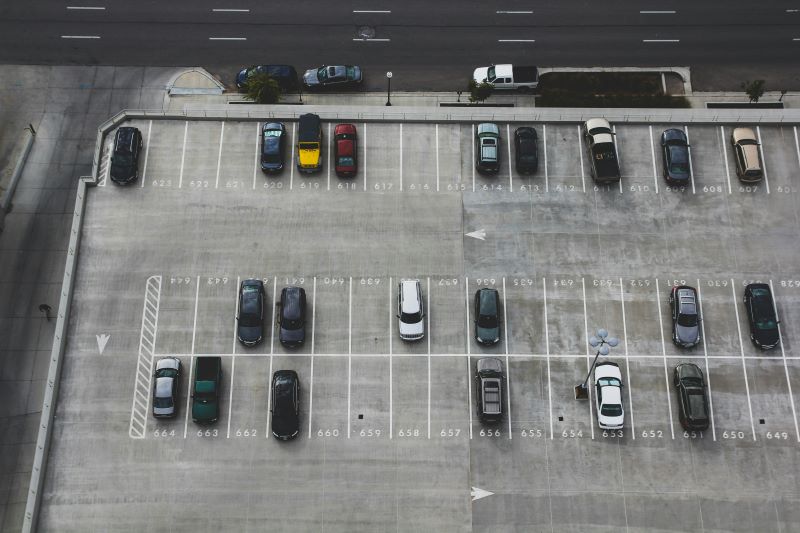Parking QR codes have emerged as a transformative solution, enhancing the parking experience for both drivers and parking operators.
By integrating QR codes into parking systems, we can simplify processes, improve operational efficiency, and provide a seamless, contactless experience.
This article will delve into how QR codes are revolutionizing parking systems, the technology behind them, and their real-world applications.
What is a QR Code for Car Parking?
A QR code for car parking is a type of matrix barcode that stores information related to parking services.
When scanned using a smartphone or a QR code reader, it can direct users to make payments, find parking spaces, and access parking-related information.
These codes are especially popular in smart parking systems, where they facilitate a smooth, contactless experience.
QR codes are extensively used in parking systems worldwide, with China being a notable example. In China, QR codes are widely used in everyday transactions, including parking.
Users can scan a QR code at the entrance of a parking facility, which logs their entry time. Upon exiting, they scan another code to pay for the time they have parked, all through their smartphones.

What is the QR Code Parking Management System?
A QR code parking management system is a comprehensive solution that utilizes QR codes to manage various aspects of parking operations. This system includes:
● Payment Processing: In a parking lot, payment QR codes function by storing unique information that can be read by imaging devices.
These codes work with smart parking software to streamline the parking process.
When drivers scan the QR code at the entrance, they are directed to a web app where they can book and pay for parking.
After completing the transaction, they can proceed directly to their designated spot.
● Parking Space Management: Real-time tracking of available spaces.
● User Management: Keeping track of user entries, exits, and payments.
● Data Analytics: Gathering and analyzing data on parking patterns and user behavior.
How Parking QR Codes Work?
The process of using QR codes for parking is easy:
● Entry: Upon entering the parking facility, drivers scan a QR code at the entrance.
● Parking: The system records the entry time and provides information on available parking spaces.
● Exit and Payment: When leaving, drivers scan a QR code at the exit. The system calculates the parking fee, which the driver pays through a mobile payment app.
The technology behind QR code payments involves integration with smart parking systems.
These systems use cameras, sensors, and software to monitor parking spaces, manage entry and exit times, and process payments securely.
Different Types of Parking QR Codes
Parking QR codes come in various types, each serving a specific purpose to enhance the parking experience.
Payment QR codes are commonly used to direct drivers to secure payment portals, allowing for quick and easy transactions using their smartphones.
Coupon QR codes offer discounts or promotional deals, incentivizing users to choose certain parking facilities or services.
Additionally, app download QR codes facilitate the installation of parking-related apps, enabling users to access advanced features such as real-time space availability, booking options, and navigation assistance.
These diverse applications of parking QR codes streamline the entire parking process, making it more efficient and user-friendly.
Benefits of Using QR Codes in Parking
1. For Drivers
QR codes eliminate the need for physical tickets, reducing contact points and ensuring a smooth, hygienic parking experience.
Drivers can easily pay for parking using their smartphones, avoiding the hassle of carrying cash or using parking meters.
QR codes provide information on parking availability and directions to the nearest available spaces.
2. For Parking Operators
QR code systems are easy to set up and manage, streamlining parking operations.
By reducing the need for paper tickets and maintenance of ticketing machines, operators can save on operational costs.
Appless payments and strategic partnerships can open up new revenue streams.
Operators gain valuable insights into parking patterns and user behavior, enabling better decision-making.
Applications of Parking QR Codes
1. Frankfurt Airport
Frankfurt Airport uses QR codes to streamline parking reservations and payments. Drivers can book their parking spots online, receive a QR code, and use it to access their reserved space.
2. Bombay Municipal Corporation
In Mumbai, QR codes have been implemented to provide real-time information on parking availability along major roads, making it easier for drivers to find parking spots.
3. U.S. Airport Parking Lots
Several U.S. airports have adopted ticketless parking systems, enhancing efficiency and user satisfaction by allowing drivers to pay and access parking through QR codes.
FAQs
1. How does the RFID parking system work?
RFID systems use radio waves to automatically identify and track tags attached to vehicles. Unlike QR codes, RFID does not require line-of-sight scanning.
2. How do I use a QR code to pay for parking?
Scan the QR code at the parking facility using your smartphone. The code will direct you to a payment portal where you can complete the transaction using your preferred payment method.
In summary, parking QR codes offer numerous benefits, from improving operational efficiency to providing a seamless, contactless experience for drivers.
As the parking industry continues to evolve, adopting QR code parking systems can greatly enhance both user satisfaction and operational management.
The future of parking technology looks promising with the integration of QR codes, making parking simpler, faster, and more efficient.
Ready to upgrade your parking system? Start generating custom QR codes today with our free QR code generator.




